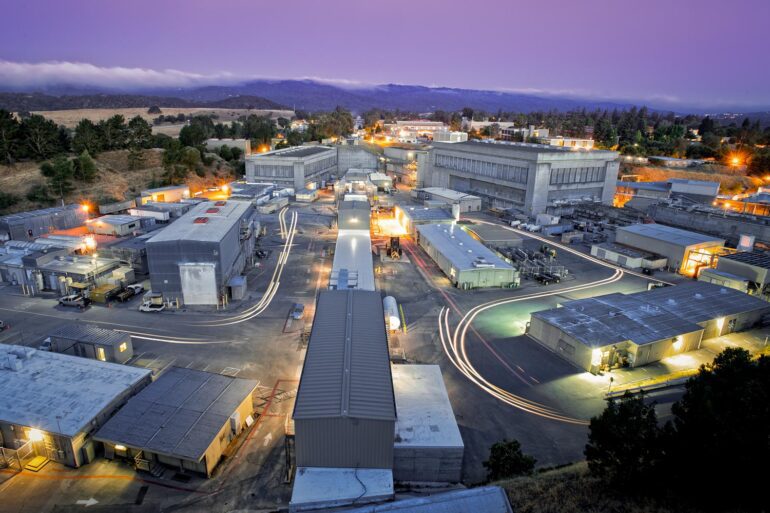TL;DR:
- Researchers at SLAC, DOE’s Argonne National Laboratory, and the University of Chicago developed an algorithm that predicts particle beam behavior in accelerators more accurately.
- The algorithm takes into account information about the beam that is usually discarded and uses it to create a more detailed picture of the beam.
- It helps scientists perform experiments more reliably, which is becoming increasingly important as accelerator facilities operate at higher energies.
- The algorithm is a major paradigm shift in the way experimental accelerator data is analyzed and enables researchers to use particle beam data in a more comprehensive way to improve scientific goals at accelerators everywhere.
- The algorithm can currently reconstruct a model of a beam along its up-down and left-right axes, and researchers aim to demonstrate it experimentally in reconstructing full 6D phase space distributions.
Main AI News:
SLAC National Accelerator Laboratory’s cutting-edge linear accelerator is a remarkable feat of technology. The accelerator employs groups of almost one billion electrons that traverse metal pipes at near-light speed to create the particle beam. This beam plays a crucial role in examining the atomic behavior of molecules, innovative materials, and a host of other subjects. Nonetheless, capturing an accurate image of the beam’s behavior as it progresses through the accelerator is difficult, and scientists can only approximate its movements during experiments.
Researchers from the Department of Energy’s SLAC, Argonne National Laboratory, and the University of Chicago have developed an algorithm that addresses this challenge by precisely forecasting the distribution of particle positions and velocities in the beam. This breakthrough will enable scientists to conduct experiments with greater dependability, a vital requirement given that accelerator facilities operate at higher energies and produce more complex beam profiles.
In April 2023, the researchers published their algorithm’s detailed methodology in Physical Review Letters. The algorithm considers data about the beam that is usually disregarded, allowing it to create a more detailed picture of the beam. “Particle beams can be manipulated in many ways inside accelerators, but we don’t have an accurate way to describe a beam’s shape and momentum,” explained Ryan Roussel, SLAC accelerator scientist and lead co-author.
Typically, researchers use a few summary statistics to describe the positions and speeds of particles in a beam, giving an overall rough shape of the beam. However, this approach discards a lot of potentially valuable data. On the other hand, beam scientists can take many measurements of the beam itself and try to reconstruct what the beam would look like under different experimental circumstances using machine learning. However, those methods require a lot of data and computational power.
In this study, the researchers built a machine-learning model that combines our understanding of beam dynamics with experimental data to predict the distribution of particle positions and speeds in the beam, known as the beam’s phase space distribution. They tested their model by interpreting experimental data from the Argonne Wakefield Accelerator at the DOE’s Argonne National Laboratory.
By incorporating particle beam dynamics physics into the experimental data, the researchers accurately reconstructed the beam’s fine details using only ten data points. This is a feat that may require up to 10,000 data points for some machine learning models that don’t include a beam physics model.
The algorithm can presently create a model of a beam along its up-down and left-right axes, as if the particle bunch were a pancake moving down the accelerator path. This form of reconstruction is referred to as 4D beam phase space. The researchers’ next goal is to demonstrate the algorithm experimentally in reconstructing full 6D phase space distributions, which includes particle positions and speed along the direction in which the beam is traveling.
Overall, the algorithm is a game-changer in the way we analyze experimental accelerator data at facilities today, Roussel said. “We can now use particle beam data in a more comprehensive, powerful way to improve our scientific goals at accelerators everywhere.” This breakthrough will undoubtedly facilitate significant advances in particle beam technology and enable scientists to conduct experiments more accurately and effectively.
Conlcusion:
The development of this algorithm for predicting particle beam behavior in accelerators is a significant breakthrough for the scientific community. Its ability to provide more precise information about the beam’s behavior during experiments will enable scientists to conduct research more reliably, opening up new opportunities for innovation and discovery.
Furthermore, this paradigm shift in the way experimental accelerator data is analyzed the potential to enhance the performance of accelerator facilities worldwide, improving their marketability and making them more attractive to potential users from academia and industry alike. Overall, the implications of this breakthrough are far-reaching, and it is exciting to see how it will shape the market for scientific research in the years to come.

